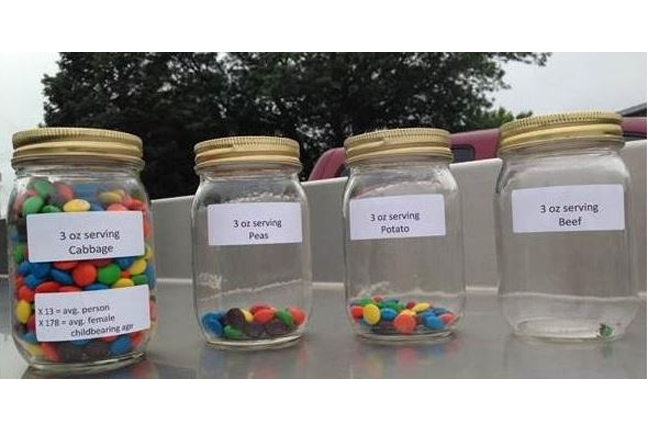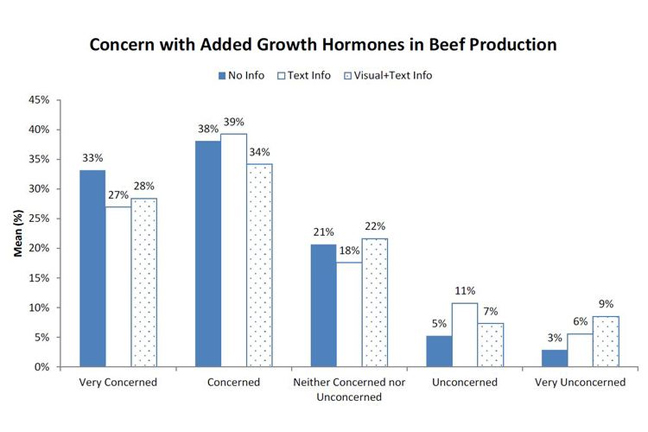
Agricultural News
Does Information on Relative Risks Change Consumers' Concerns about Growth Hormones?
Thu, 17 Apr 2014 11:27:31 CDT

Dr. Jayson Lusk, Oklahoma State University food and agricultural economist, writes in a recent issue of BEEF Magazine:
Consumers often express concern about the use of growth promotants in animal agriculture. In the beef industry, various growth hormones are administered to cattle to improve and speed the rate of growth (and some would say, improve the sustainability of beef production). Upwards of 90% or more of feedlot cattle in large feedyards are given hormone implants.
Some consumers are fearful about the safety effects. For example, the EU has banned imports of hormone-treated cattle from the US for over 20 years (a policy which probably has more to do with protectionism than actual safety concerns). Other people have argued that these are the cause of decreasing puberty age of girls (which the data doesn't support).
As a result, many in the beef industry have have tried to communicate the fact that the risks from hormones are small to non-existent, and are much smaller than the risks from hormones in everyday foods. The normal comparison is between how much estrogen is in a hamburger from an implanted steer or heifer vs. the amount of estrogen in other foods like soybean oil or cabbage. Examples of such discussions appear at BeefMyths.org, US Meat Export Federation, the NCBA, and extension facts sheets from Michigan State University, University of Nebraska, University of Georgia, and many others.
Circulating on the web a while back were some discussions of using some visual strategies to communicate the relative risks from estrogen used in cattle implants. For example, here is one blog discussing the use of M&Ms to convey the risks.
The question I wanted to know is whether any of these sorts of communications actually has any impact on the people for whom it is intended.
In the most recent issue of my monthly Food Demand Survey (FooDS), we sought to address this issue. 1,017 respondents were randomly allocated to one of three information groups or treatments. In the first no-info group, respondents were simply told, "About 90% of feedlot cattle are given added growth hormones to improve the rate of growth." And then, respondents were asked, "How concerned are you about the use of growth hormones in beef production?"
For the second group text-only group, written text was added to convey relative risks of hormone use. Prior to being asked level of concern, subjects were told, "About 90% of feedlot cattle are given added growth hormones to improve the rate of growth. The added hormones add about 3 extra nanograms (a billionth of a gram) to a 3 oz serving of beef. For comparison purposes, the amount of estrogen that naturally occurs in 3 oz of the following foods is: potatoes (225 nanograms), peas (340 nanograms), cabbage (2,000 nanograms), soybean oil (170,000 nanograms)."
Finally, the third visual+text group was given the same written text but was also shown the above visual illustration using M&Ms allocated to different jars.
Participants in all three groups answered with their level of concern on a five-point scale (1 = very unconcerned; 5=very concerned).
Information on relative risks caused a small but statistically significant reduction in the level of concern. The mean levels of concern, on the 5-point scale, were 3.93, 3.71, and 3.66 for the no-info, text-only, and text+visual information groups.
Without any information on relative risks, over 71% of respondents indicated that they were either concerned or very concerned. Textual information reduced that frequency to 66%, and visual+text information further reduced the percentage of concerned respondents to 63.6%.

WebReadyTM Powered by WireReady® NSI
Top Agricultural News
More Headlines...



















